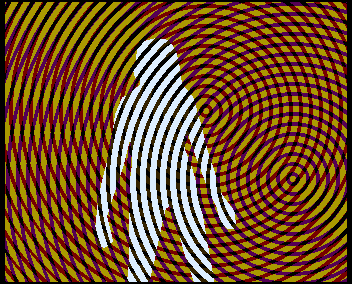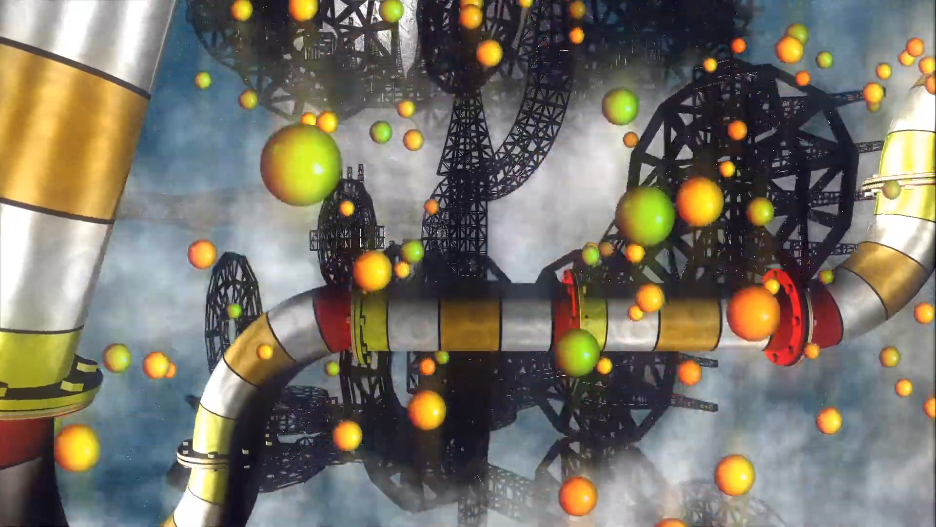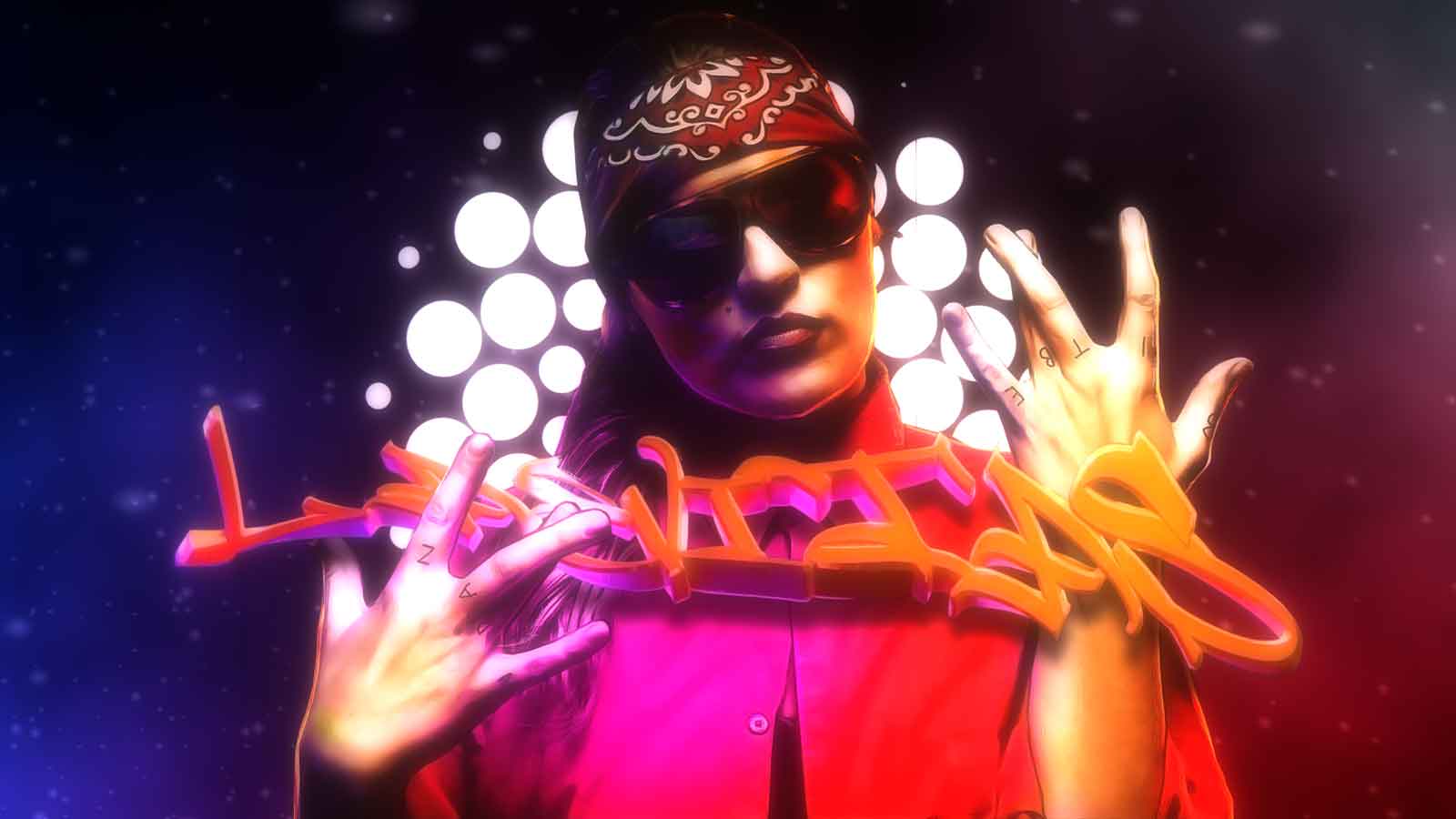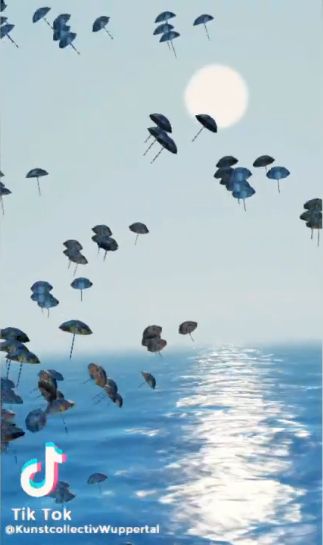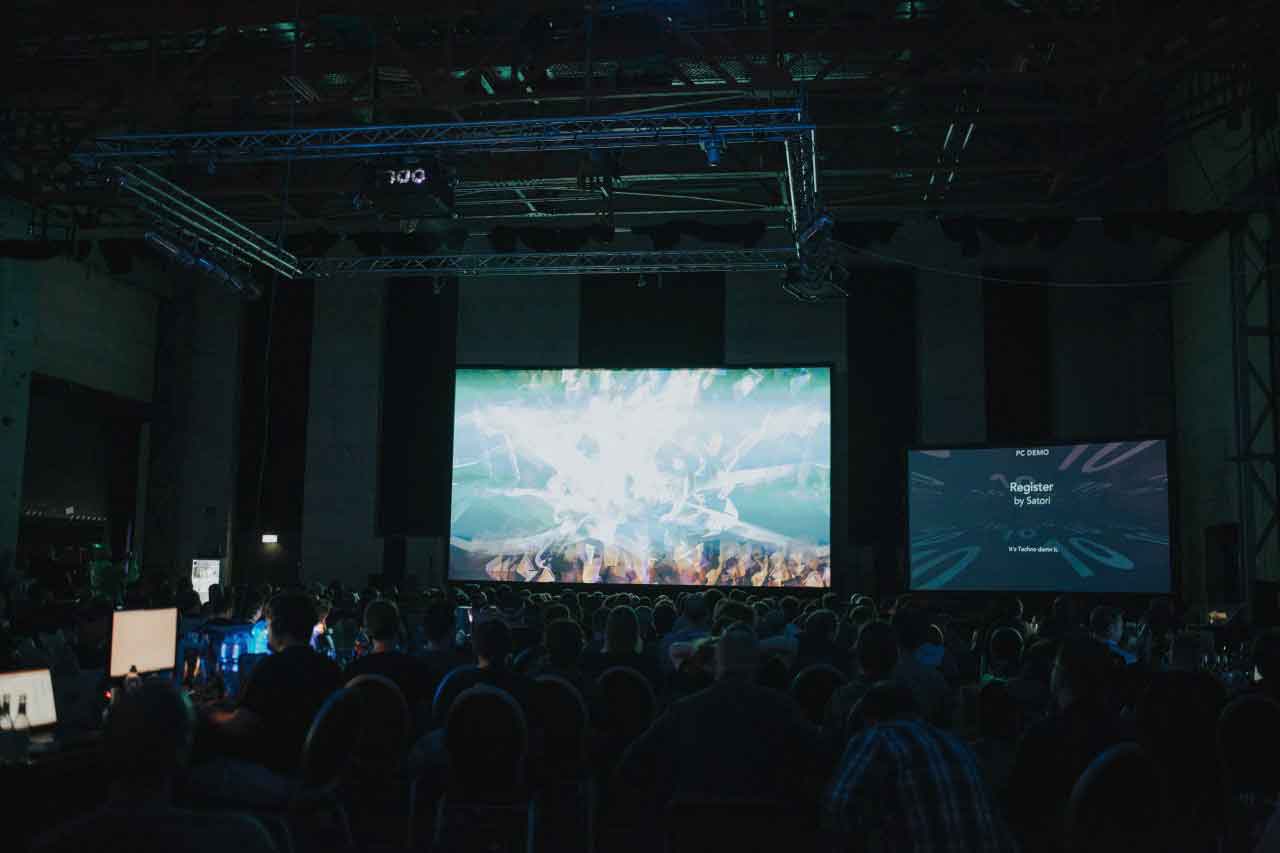
Demoparty © Darya Gulyamova / Deutsche UNESCO
The demo scene has been around for as long as the personal computer. In the time when computer casings were not yet welded together and it was possible to tweak the software, amateurs began experimenting with writing codes that generate camera-less short films on the monitor screen.
In March, the German Ministers of Education Conference (KMK) added 18 further living traditions to the German National List of Intangible Cultural Heritage [1]. Together with clockmaking craftsmanship or viniculture, “demos” have now also been included here. Acceptance on the heritage list serves to protect and preserve living, traditional forms of culture[2].
The application to recognise demos as cultural heritage was already submitted in 2019 by the Art-of-Coding initiative. Tobias Kopka (Digitale Kultur e.V. association), an organiser of international game conferences and curator of demo parties, assumed overall responsibility for this, and the application was written as a joint effort from within the scene [3].
The demo scene is internationally active, organises itself decentrally and is non-commercial. It is committed to the production of digital audio-visual works. Normally, the demos are several minutes long and consist of software-generated animation sequences combining music, videos, text, pixels and 3D graphics. The demo scene festivals are called demo parties. Each demo is allowed to participate in only one competition.
The Art of Coding
Demos resemble animated films. But when it comes to their production they are not so, as aminated films consist of sequences of previously created still images. By contrast, the demo images are generated by a program written by an author themself, and they are displayed in real time while the program is running. Their art lies in the elegance of the coding. And demonstrating this – hence the name – is just as important as the graphic result.
Demos come from an era when the storage space on home computers was scant and expensive. And fast graphic cards would only become commonplace much later. With the result that it became more than just a question of pride to trim down demos to a minimum data size. At demo parties, there are even competition sections based on file sizes – such as for demos of maximum 64 Kb or intros of just 4K, for instance. They are shared in the form of executable files.
Parties, Styles and Archives
Although the general public has tended to show little awareness of them, even today large demo parties similar to festival events with competitions are held almost every week somewhere across the globe. While the demo scene does have an international reach, it is more of a European phenomenon, with one area of concentration being in the north (Denmark, Finland, Norway). One of the biggest events in Germany consists of the Evoque in Cologne. Like all public events, the demo scene has also been affected by the corona pandemic. The Evoque 2020 was held in August under the amended name of “Novoque“, as a six-hour live event with almost 2,000 ‘visitors’ on Twitch.tv.
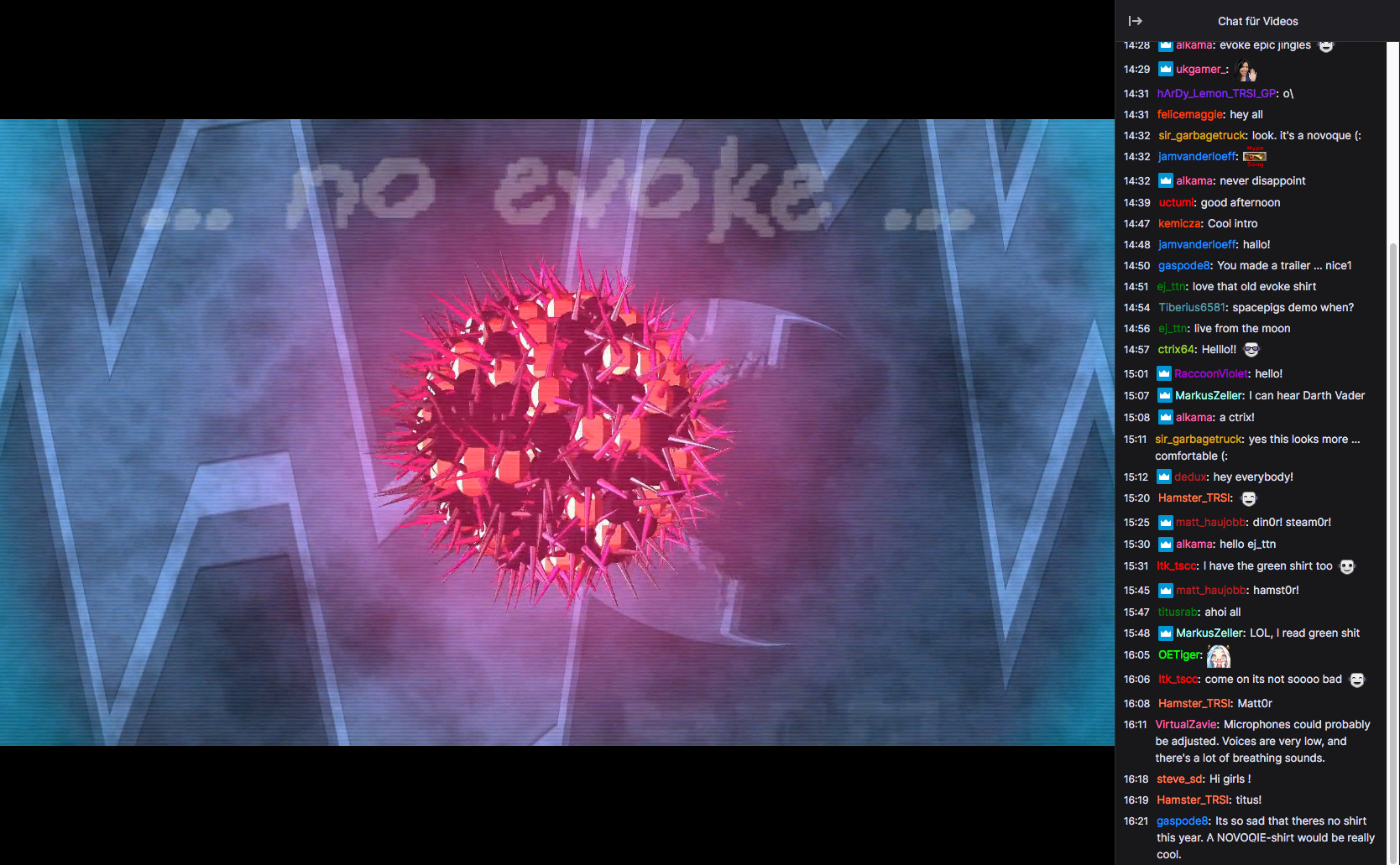
Screenshot of the trailer launching the “Novoque” event (Cologne 2021)
Likewise, it did not prove possible to hold the legendary Assembly event as usual on location in Helsinki. But for that, a clearly extended online edition was organised (08. – 28.03.21). Unlike other demo parties, the Assembly event even has its own competition section for short films. The narrative works screened in this “Shortfilm Compo” category are more untypical for the scene. A retrospective of films from the Shortfilm Compo competitions over the last few years was shown at this year’s Assembly and can be viewed online [4].
The diversity of styles found in the demos is extremely broad, as is the case with short films in general. These range from purely graphic pieces to photorealistic works, and from abstract forms to demos with a plot and message. Traditional short film festivals have shown little interest in this filmic form to date. But artistic demos are screened at media art festivals, and were so in the past too.
Perhaps it is due to the real-time character of the demos or their data-carrier formats as to why there are so few exchanges between these two scenes. But even vintage demos that only run on old Ataris or Amigas have also long been available as MPEG videos. In fact, there are just documentations of the original works recorded live by screen grabbers.
The archival situation is excellent. There are quite a few websites that store and preserve generations of demos in various data formats. As the demo scene has never been commercially driven, these demos are also freely available. In other words, they are viewable without licence fees or access restrictions. In the past, coders could earn money at most in the concert and music sector, with which there is a great technical and socio-cultural affinity.
The demo scene websites, which deliberately forego visual frills, often look like bulletin boards from the last century when the internet was not yet fully capitalised. Yet despite this, the demo scene and its makers can look to the future, thanks to their know-how and skills. And that as a major source of innovation – for instance when designing and coding faster, resource-conserving 3D web applications and VR environments on the internet.
Selected Examples
A good introduction to the scene’s early days is provided in the documentary demo “XAYAX – Bang!”, uploaded online as a video by the Museum of Electronic Games & Art (MEGA in Alsbach-Hähnlein) (8 min, 2014).
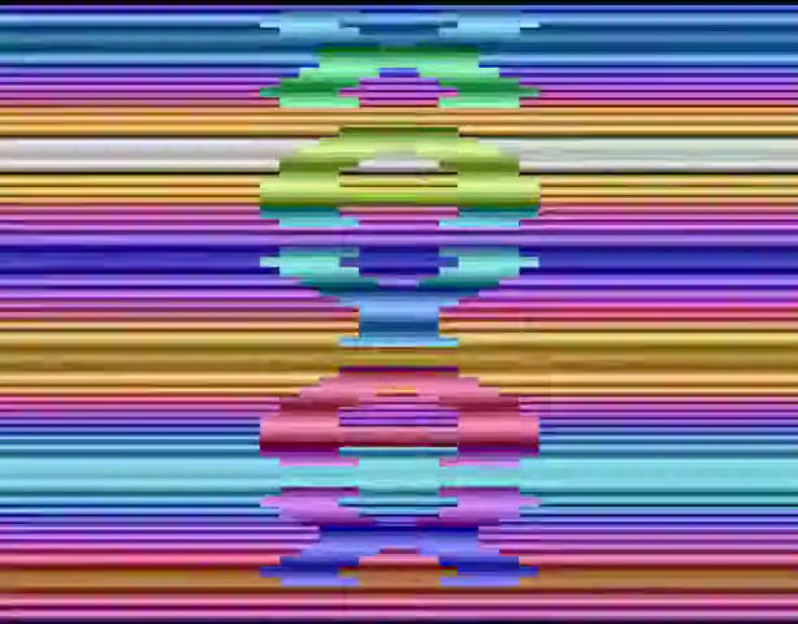
“XAYAX – Bang!” (Graphics: Deft, Titus, Veto, Svolli, Music: Skyrunner) © MEGA – Museum of Electronic Games & Art
“State of the Art” from Spaceballs is an early example of a graphic work with typical dancing motifs (Code: Lone Starr & Major Asshole, 1992, Amiga 50 B/sec, 4:12)
Original in the pouet archive
Videodokument auf YouTube
For all those who are ready for more and not put off by a certain monotony, there is “Jesus on E’s”, an unusually long remix sampler of the Leeds Spreading Division (LSD). The work with a running time of 30 minutes was released in 1992 at the Digital Symposium in Rotherham (UK) – incredibly– on just two 880 KB floppy discs. »The demo captured the style of visuals that would have been played at raves of the time«, dipswitch has written on Demozoo.
“Jesus on E’s” von LSD, Code: Shagratt. Music: Echo. Graphics: Shagratt, Watchman, Pazza, Polo (UK 1992).
Original in the pouet archive
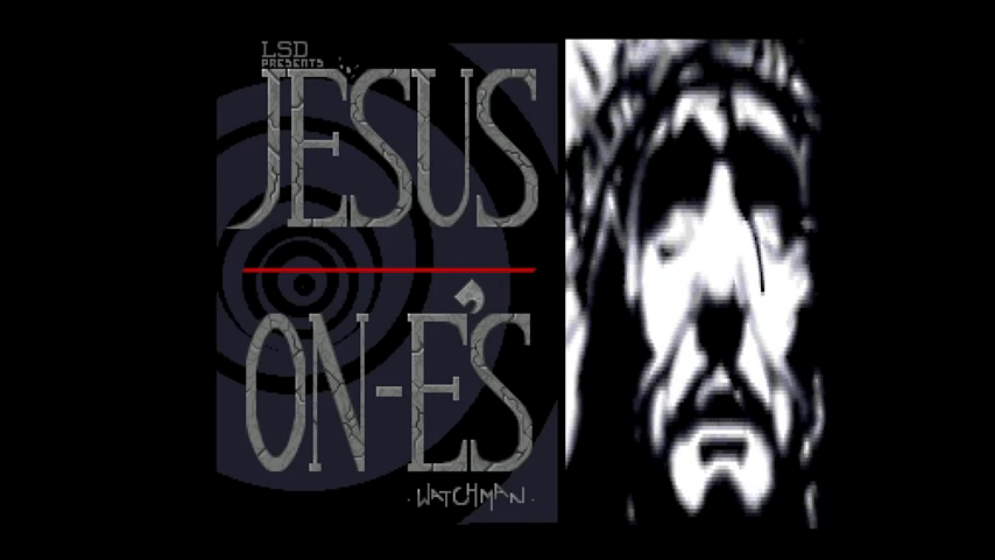 As a video on YouTube
As a video on YouTube
One example of a music video in an animated-film style is “Wir sind Einstein” from United Force & Digital Dynamite (code: Barna Buza aka BoyC, graphics/music: András Kövér aka slyspy, Hungary 2010, 4:06), the 4th place winner in the PC-Demo competition at Breakpoint 2010.
“Wir sind Einstein” FullHD Video on YouTube
Creative coding: “fr-093: Technology” from Farbrausch, Benjamin Rosseaux aka BerRo (64k Intro für Evoke 2019, D 2019, 2:30 min.)
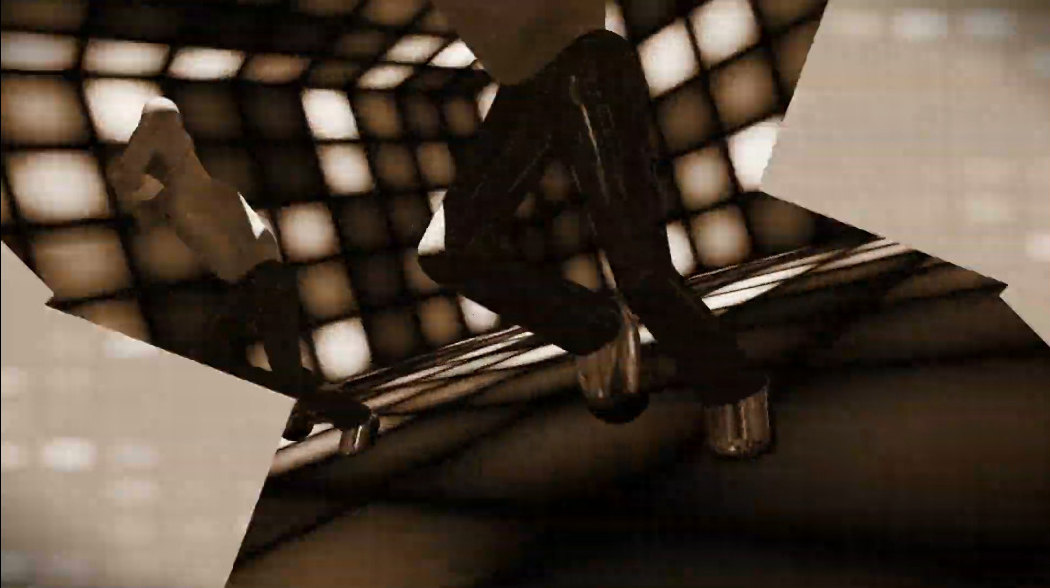
Website of the author: https://www.rosseaux.net/
As a video on YouTube
Demos can also incorporate photographic shots as ‘found footage’, as this breakbeat music video shows that won a first prize at the Evoke 2020:
“Bitbendaz (feat. Daytripper)” from Mikael Stalvik aka Laevitas (S 2020, 4:25 min).
Original in the pouet archive
“Bitbendaz” as a video on YouTube
Finally, there is even a recent real-time demo from Germany: The TikTok parody “Achtung!” from the Kunst Kollektiv Wuppertal art collective (2020, 1:32 min)
On Demozoo
In the pouet archive
As a video on YouTube
LINKS
URL of the Assembly 2021
Lists on demoparty.net Upcoming parties 2021
URL of the association Digitale Kultur e.V.
[1] KMK press release: https://www.kmk.org/presse/pressearchiv/mitteilung/20-neueintraege-ins-bundesweite-verzeichnis-des-immateriellen-kulturerbes-gebaerdensprache-demoszene.html
[2] The intangible cultural heritage list includes living traditions from the fields of dance, theatre, music, oral traditions, natural sciences and handicraft techniques. Since 2003, UNESCO has supported the protection, the documentation and the preservation of these culture forms.
[3] Application: http://demoscene-the-art-of-coding.net/wp-content/uploads/2020/01/AoC_German_appliaction_Oct2019_pub.pdf
[4] Short Compo retrospective at
the Assembly 2021 on twitch.tv: https://www.twitch.tv/videos/952822225?filter=archives&sort=time
